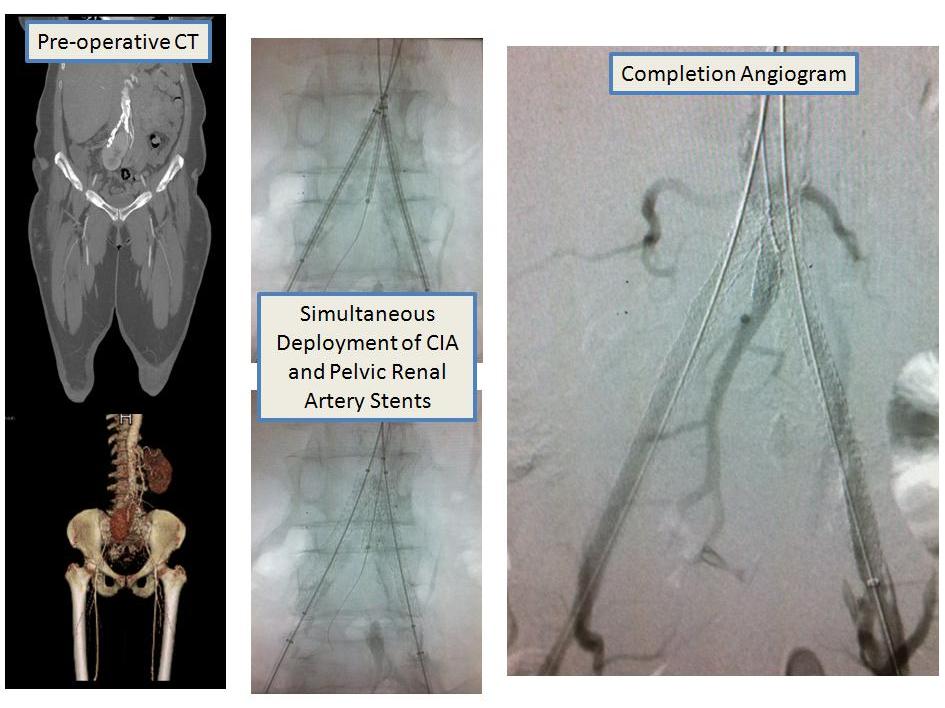|
Back to Annual Meeting Posters
A Complex Reconstruction of Leriche Syndrome with an Aberrant Pelvic Kidney
Jane K. Yang, M.D., David Polanco, Lee J. Goldstein, M.D..
University of Miami, Miller School of Medicine, Miami, FL, USA.
Objectives
A congenital pelvic kidney is extremely uncommon, with reported incidences between 1: 800 and 1:3000. Traditionally, the treatment of aortoiliac occlusive disease associated with a pelvic kidney has been aortobifemoral bypass with pelvic renal artery re-implantation. We present the first reported case of a patient with Leriche syndrome and a pelvic kidney treated endovascularly.
Methods
A 63 year old woman with hepatitis C, cirrhosis (Child-Turcotte-Pugh class C), hypertension, and angina presented with a non-healing ulcer of her left great toe. CT angiography demonstrated severe occlusive disease of her aorta and bilateral common iliac arteries (CIAs), as well as a right pelvic kidney perfused by the right CIA immediately distal to the aortic bifurcation. Given the patient’s severe comorbidities, we performed an endovascular reconstruction of the aortoiliac system, preserving the pelvic kidney.
Under local anesthesia, bilateral trans-femoral angiography demonstrated flush occlusions of both CIAs with patent internal (IIAs) and external iliac arteries (EIAs). The Crosser (Bard Peripheral Vascular, Inc., Tempe, AZ) was used to recanalize both the left and right CIA. The pelvic renal artery was cannulated from left brachial access. A covered stent (iCast, Atrium Medical Corp., Hudson, NH) was simultaneously advanced into the pelvic renal artery and each of the CIAs, and the stents deployed in a trifurcated configuration. The CIA stents were extended with additional iCast stents to complete treatment of the iliac stenoses. Completion angiogram demonstrated in-line flow from the aorta into both CIAs and into the pelvic kidney.
Results
Post-operatively, the patient’s creatinine remained at her baseline 1.1. A renal scan demonstrated preserved function of the pelvic kidney and her great toe ulcer was completely healed at her one month follow-up visit.
Conclusion
This patient was a poor candidate for an open surgical procedure. Child-Turcotte-Pugh class C status, angina, and morbid obesity placed her peri-operative mortality at over 80%. Endovascular aortoiliac grafts have been shown to be safe options for patients, providing good patency rates. Under only local anesthesia, we percutaneously treated this patient’s Leriche syndrome while preserving perfusion to her pelvic kidney. 
Back to Annual Meeting Posters

|

